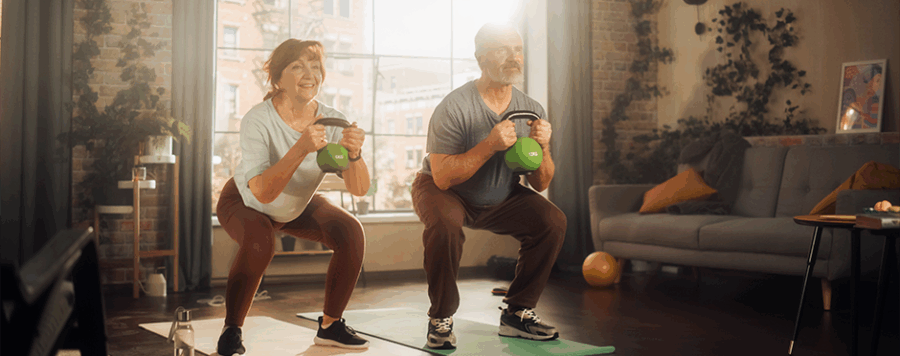Anaerobic exercise is defined as exercise of high intensity and short duration where oxygen is not the primary energy source. Anaerobic means “without oxygen,” and instead of using oxygen as the energy source, the body uses stored energy in the muscles and fat.
Anaerobic exercise has many applications and benefits for people of all ages and physical ability levels. Incorporating a few of these anaerobic exercise suggestions into your exercise program will help you achieve optimal health.
Adolescents and Teens
Body weight resistance strengthening is an excellent form of anaerobic exercise for teens. Push-ups, pull-ups, air squats, lunges, dips, and planks are all exercises that can be performed at a high intensity and short duration with no equipment needed.
Body weight exercises allow for a natural progression of strength during the time the musculoskeletal system is developing. This allows for proper muscle growth without negatively affecting the musculoskeletal system.
Plyometrics is another great anaerobic exercise option for teens. Performing jumping jacks, box jumps, jump squats, burpees, and handstand walks will help build muscle and train coordination and various athletic movement patterns.
Adults
While cycling, rowing, and swimming are traditionally aerobic exercises due to their endurance nature, they can be performed in an anaerobic way. Performing these activities for a short duration at high intensity, followed by a brief rest period for a predetermined number of cycles, is called High-Intensity Interval Training (HIIT).
HIIT is an excellent anaerobic activity as it is a tool that can be implemented with many of the activities people already participate in and enjoy. No need to reinvent the wheel when modifying what’s already being done would suffice.
Kettlebell workouts can also be a fun anaerobic exercise to perform. Kettlebells allow you to combine a variety of movements into a circuit training style. Kettlebell workouts not only build strength but also promote flexibility and mobility.
Seniors
Older adults are certainly not excluded from anaerobic exercise. Pilates and yoga provide benefits for strength, range of motion, and flexibility while allowing for the activity to be controlled and safe. This form of anaerobic exercise can greatly enhance a person’s function and reduce their risk of falls.
Walking is a popular form of exercise for many seniors, which can also be performed in an anaerobic way. Rotating through periods of quicker walking followed by short periods of slow walking produces an anaerobic effect. Cycling through these changing speeds can burn more calories over the same period of time as walking at a consistent speed.
Anaerobic exercise can also be performed in the home by repeatedly walking up and down the stairs, performing repetitions of sitting to standing, and/or gentle wall pushups. All of these activities can reverse muscle loss which is a significant concern with aging.
An Exercise Option for All
Anaerobic exercise, or short burst high-intensity exercise, has a place and benefits for people of all ages and physical abilities. Incorporating anaerobic exercise is vital for optimal health. If pain stops you from participating in this form of exercise, contact your nearest Athletico for a free assessment. Free assessments are available in-clinic or virtually through our Telehealth platform.
*Per federal guidelines, beneficiaries of plans such as Medicare, Medicaid, Tricare, VHA and other federally funded plans are not eligible for free assessments.
The Athletico blog is an educational resource written by Athletico employees. Athletico bloggers are licensed professionals who abide by the code of ethics outlined by their respective professional associations. The content published in blog posts represents the opinion of the individual author based on their expertise and experience. The content provided in this blog is for informational purposes only, does not constitute medical advice and should not be relied on for making personal health decisions.
About the Author:
Brian Whittington is a physical therapist and regional director for Athletico. Brian is particularly interested in treating knee and shoulder injuries and specializes in post-operative ACL reconstruction rehabilitation. Brian's treatment focus also includes the growing patient population dealing with chronic pain. His practice philosophy is not limited to injury recovery but includes education for injury prevention and general health and wellness. Brian's mission is simple, keeping people moving so they can live optimally healthy lives.

 width="900"
height="356"
>
width="900"
height="356"
>
